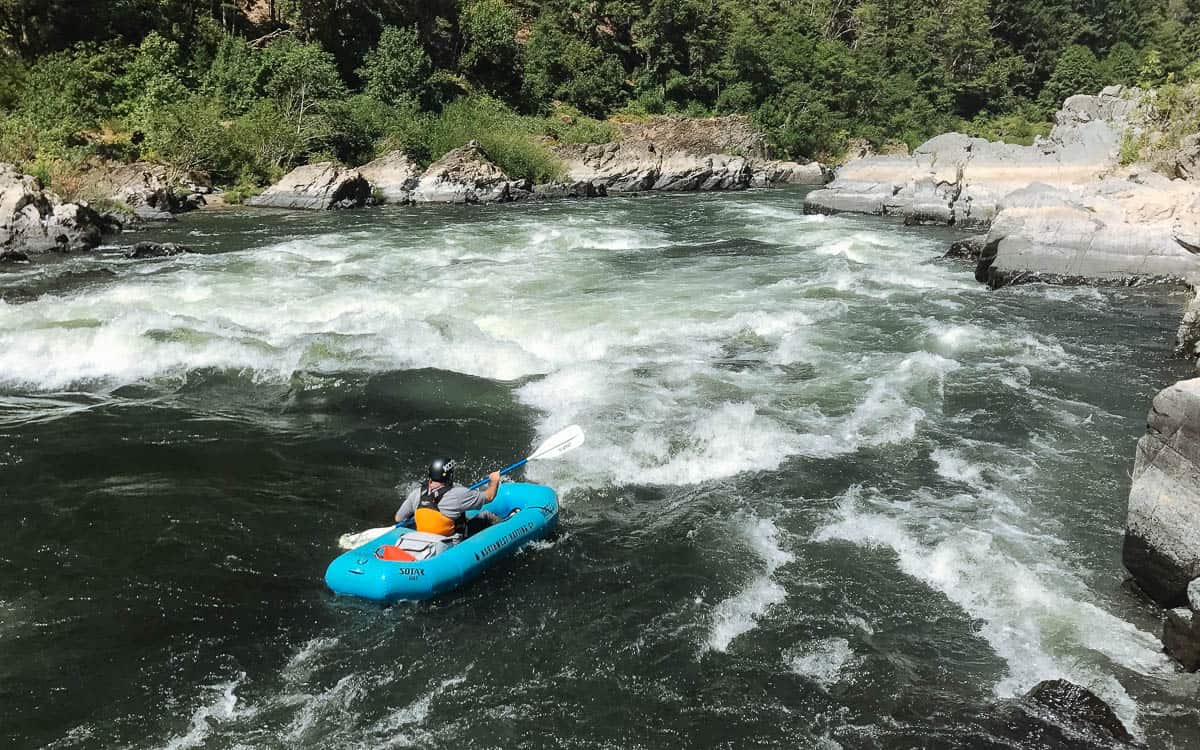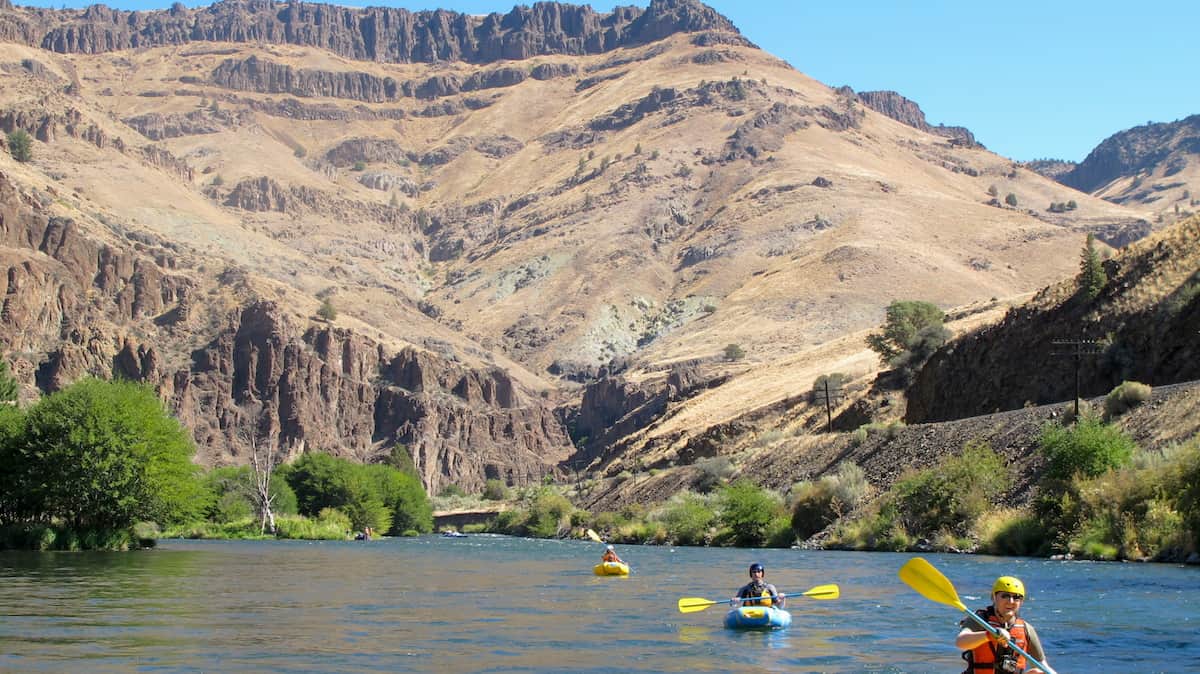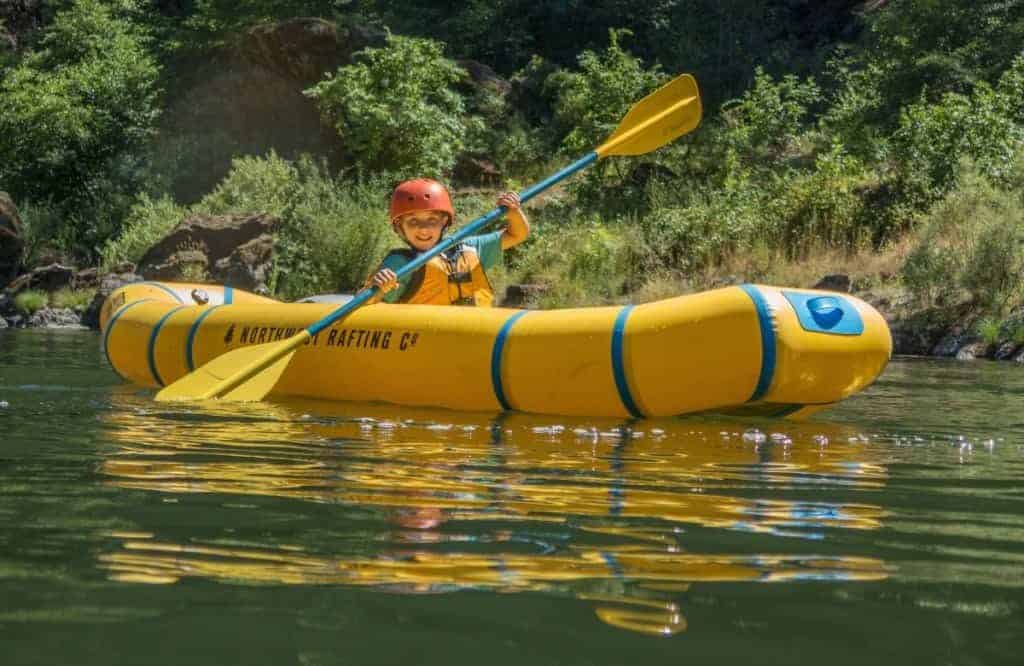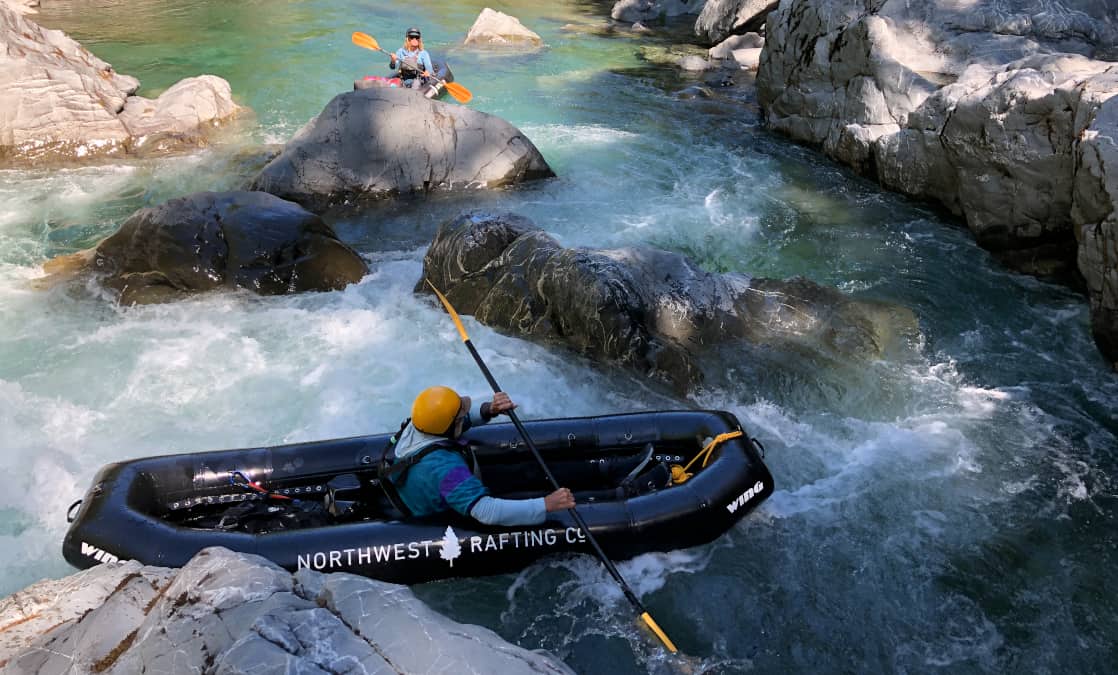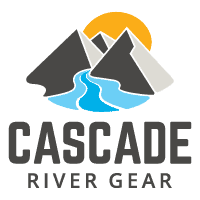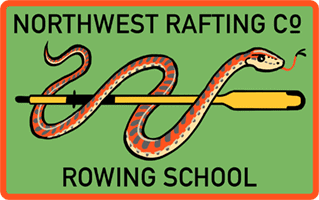Introduction to Inflatable Kayaking
Inflatable kayaking (IK) is a great introduction to the water. Their versatility can surprise you: IK’s can be perfect for a relaxing lake paddle, an exciting whitewater expedition, or a fishing excursion. While commonly portable and stable, different models may be better suited to different uses. Below is an introduction to this sport with all the basics for planning your own trip.
What is an Inflatable Kayak?
Generally speaking, inflatable kayaks are 10-15 feet long and made up of two side tubes, an inflatable floor, and some sort of seat. They can hold as many as three people, but normally come in single or tandem models. It is helpful to check the weight capacity before purchasing a kayak. Overloading it with gear or extra passengers can affect an IK’s performance and maneuverability once on the water.
Introduction to Different Types of Inflatable Kayaks
Boat shape and material can vary greatly depending on the intended use. For those who want to relax or take the kids out on the lake, there are numerous models out there with different size, weight, and price combinations. For those looking to fish, some fishing IK’s come with more bells and whistles like rod holders or tie points to better handle the extra gear. They usually have higher seats and some even sport a metal rod between the tubes to increase stability while wrestling with your catch. Both these types of inflatable kayaks can have a keel to help track in flat water.
Without needing to attach yourself to a traditional hardshell kayak, inflatable kayaks can also provide access to some great whitewater and multi day trips. Stability, durability, and weight are some of the most important factors in choosing these boats. Many models are made by companies that also make rafts. The Hyside Padillac or AIRE kayaks are some of the most stable and durable, designed to perform tighter moves. But, they are on the heavier side. The AIRE kayaks usually feature a double bladder design as opposed to a single outer tube and have built-in loops to strap gear. NRS has a selection of different whitewater models as well.
Expedition Inflatable Kayaks
For the true lightweight expedition, we can turn to the Wing Jimbo or AIRE BakRaft. Weighing in at 25-30 lbs and 12 lbs respectively, these kayaks are great for multisport trips. Do not forget the repair kit because sometimes the lightweight material is a trade-off with durability. These kayaks are both great for stout whitewater while and rocks while still handling gear, though the Jimbo can handle a bit more weight than the BakRaft.
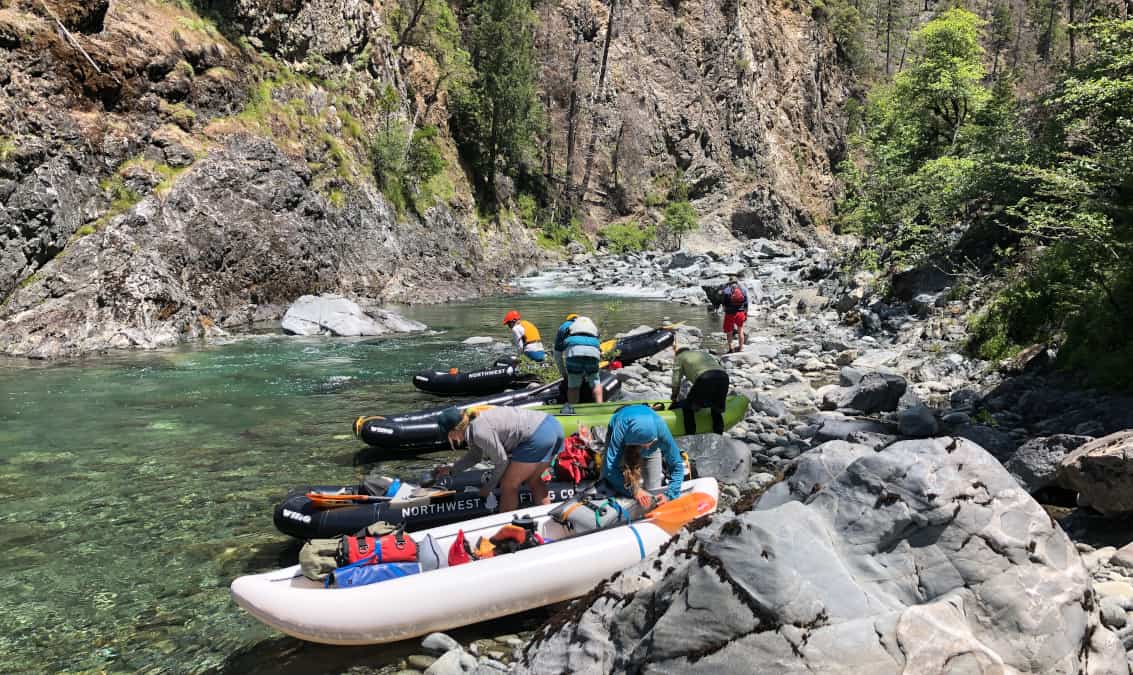
Morning Rig on the Upper Chetco Expedition Using the Wing Jimbo (black IK) and the AIRE BakRaft (white and green).
Storing and Repairing Your Inflatable Kayak
Not only are inflatable kayaks easy to transport, but they are also easy to roll and store. Ideally, only store the boat when it is completely dry and clean. Keep it in a cool, dry spot. If it needs to be cleaned, try to avoid harsh chemicals that could damage the boat by using a material-specific product or a natural all-purpose cleaner.
If the boat is damaged, for best results repair it when clean and dry. Inflatable kayaks are made out of a range of materials including PVC variants, urethane, or nylon with different coatings. Make sure you have the correct glue, patch material, or sewing kit that comes with the boat. Sometimes the correct type of Tear-Aid works great in a pinch.
An Introduction to Planning Your Inflatable Kayaking Trip
Once you have chosen your boat, make sure that you can safely execute your trip. Along with your craft, remember your paddle, pump, and personal flotation device (PFD). If you want to run whitewater or organize an expedition, more safety gear is required (helmet, good shoes, etc.) as well as the repair kit. While it can be easy to fall out of an inflatable kayak, the great thing about IK’s is that it is easy to get back in! Last but not least, don’t forget your fun friend.
In summary, inflatable kayaking is a fantastic way to get active, explore your local waterway, or serve as an exciting introduction to whitewater. When considering an inflatable kayak, think about these five criteria:
- Type of Activity
- Stability
- Durability
- Weight
- Price
Have fun!
